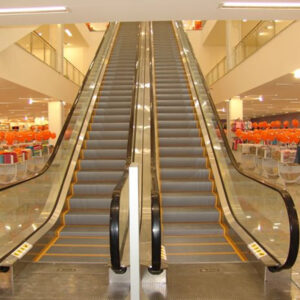Table of Contents
Togglenon-standard elevators
Non-standard elevator design and manufacture are revolutionizing the vertical transportation industry. With their unique features and customizability, these elevators have garnered significant attention from customers worldwide. This article examines the advantages and application fields of non-standard elevators, providing a comprehensive understanding of their immense potential and impact on various sectors.
The Power of Customization:
One of the key advantages of non-standard elevator design and manufacture is the ability to customize every aspect of the elevator to meet specific requirements. Unlike traditional standardized elevators, non-standard elevators enable architects, engineers, and building owners to bring their innovative concepts to life. With limitless possibilities, these elevators can be tailored to fit any architectural style, allowing for seamless integration with buildings’ aesthetics. For instance, a luxurious hotel could install a non-standard elevator adorned with intricate designs, introducing an element of opulence to the overall ambiance.
Non-Standard Elevators in Unconventional Spaces:
The application fields for non-standard elevators are vast and diverse. With their adaptability to unusual spaces, these elevators are ideal for installations where traditional elevators often fall short. For instance, in historical buildings or heritage sites, non-standard elevators can be designed to blend seamlessly with the existing structures while still providing safe and efficient vertical transportation. The incorporation of modern, advanced technology within a traditional setting can enhance the overall visitor experience, without compromising the architectural integrity of the space.
Promoting Accessibility and Inclusion:
Non-standard elevators play a pivotal role in promoting accessibility and ensuring inclusivity for all individuals. By breaking away from the conventional norms of elevator design, non-standard elevators can accommodate specific mobility needs. For example, an elevator can be designed to provide a larger platform size, making it wheelchair accessible. Additionally, these elevators can incorporate advanced technological features such as voice recognition for visually impaired users, further enhancing their functionality and inclusivity.
Efficient Space Management:
Non-standard elevators offer significant advantages, particularly in situations where space is limited. These elevators can be designed to optimize space utilization without compromising on efficiency or passenger capacity. In crowded urban areas, where maximizing square footage is crucial, non-standard elevators can be seamlessly integrated into the available space. This makes them an excellent choice for compact commercial spaces and high-rise buildings where every square foot matters.
Driving Innovation and Sustainability:
Non-standard elevator design and manufacture are at the forefront of technological advancements and sustainability initiatives. These elevators offer energy-efficient options, employing regenerative drives and smart controls to reduce energy consumption. By incorporating eco-friendly materials and systems, non-standard elevators contribute to the overall sustainability goals of buildings. Moreover, ongoing research and development in this field continue to push the boundaries of technological innovation, resulting in elevators that incorporate green technologies and promote greater efficiency.
Non-standard elevator design and manufacture present a new horizon of possibilities in the vertical transportation industry. With their ability to customize every aspect, adapt to unconventional spaces, promote accessibility, optimize space utilization, and drive innovation, these elevators have become indispensable in various application fields. By embracing creativity, sustainability, and technological advancements, non-standard elevators are revolutionizing the way we perceive and utilize elevators, ultimately shaping the future of vertical transportation.


